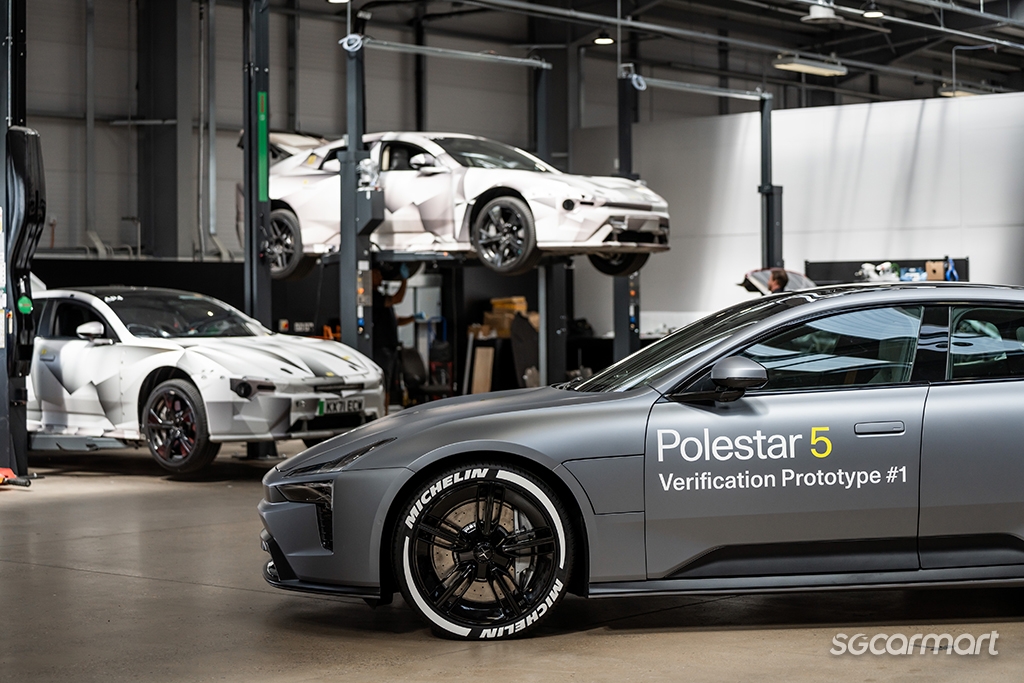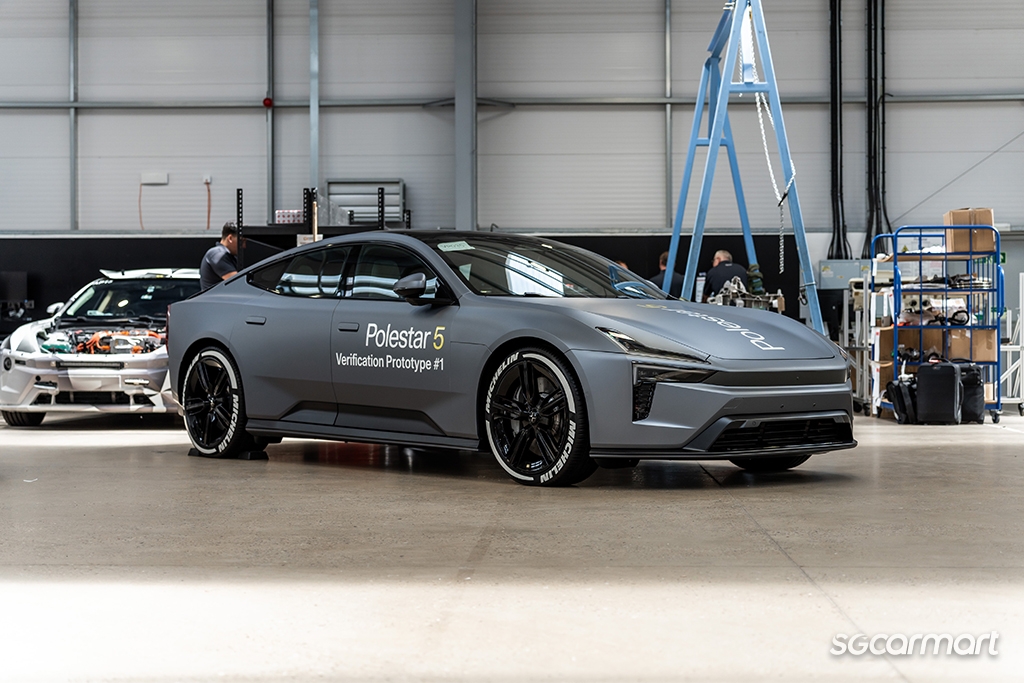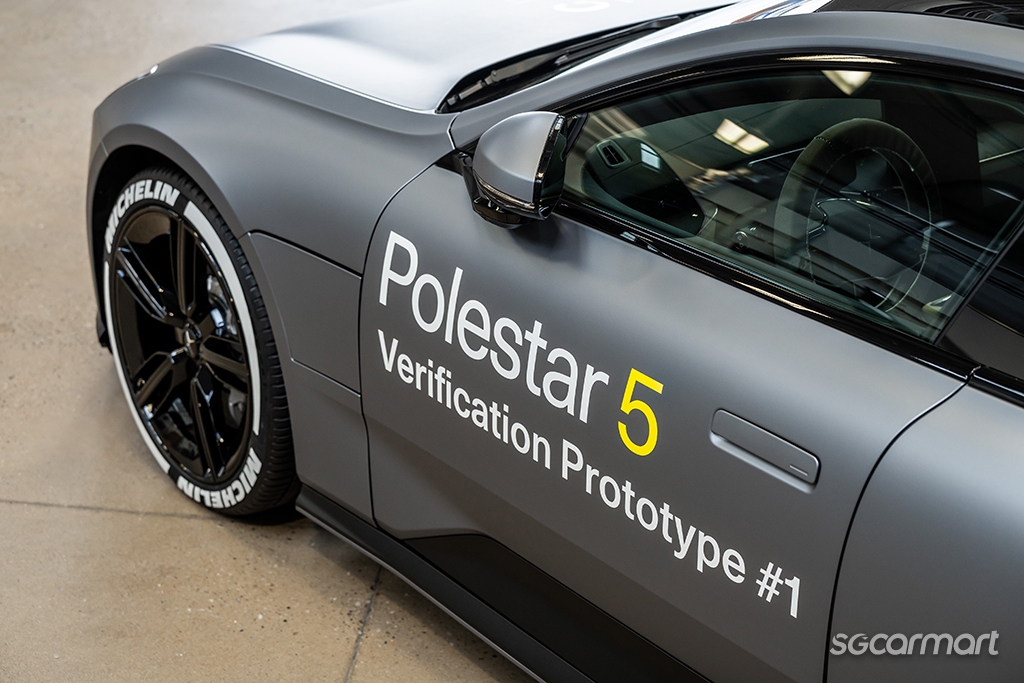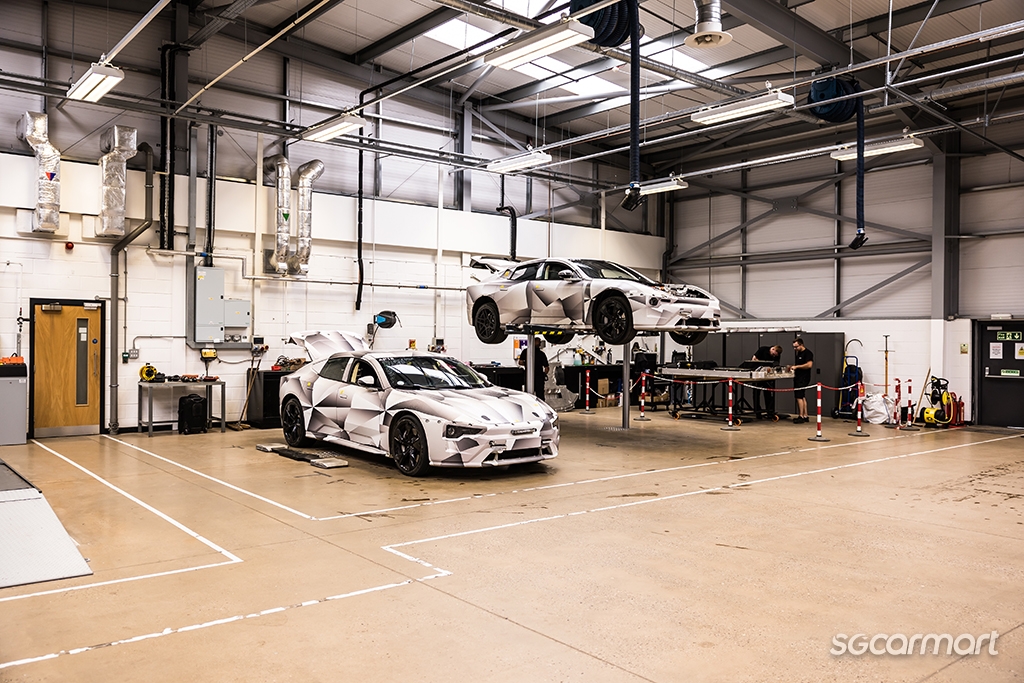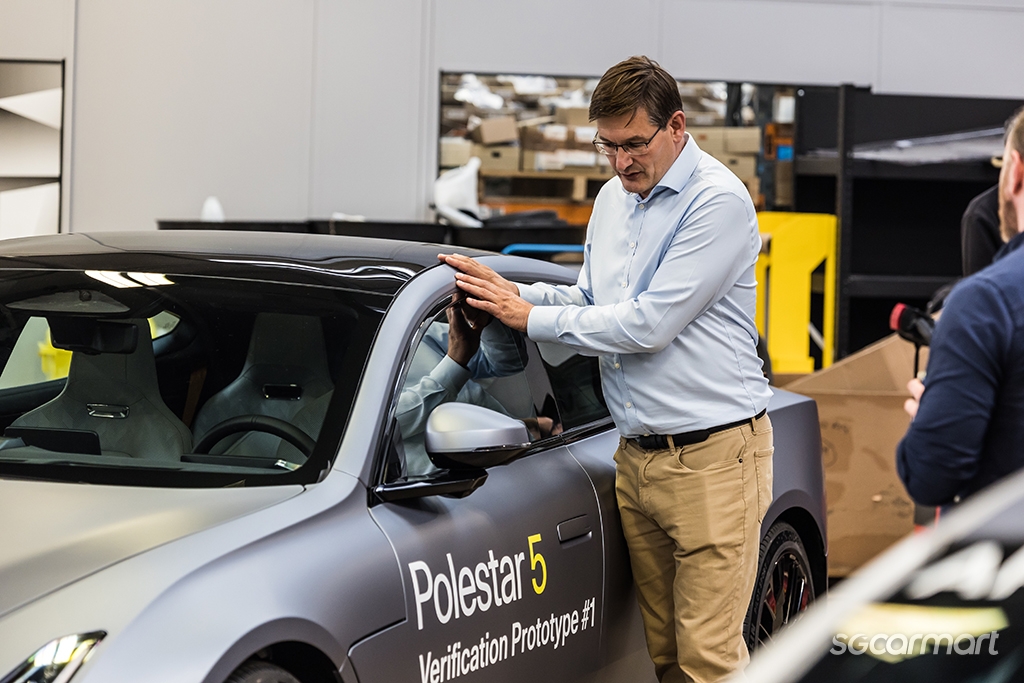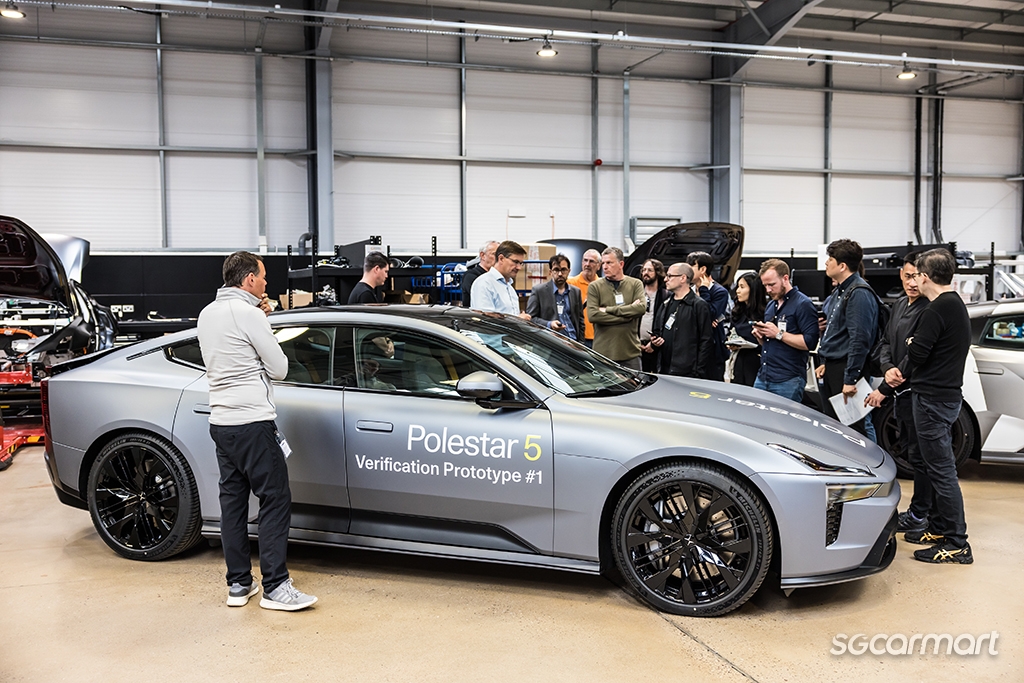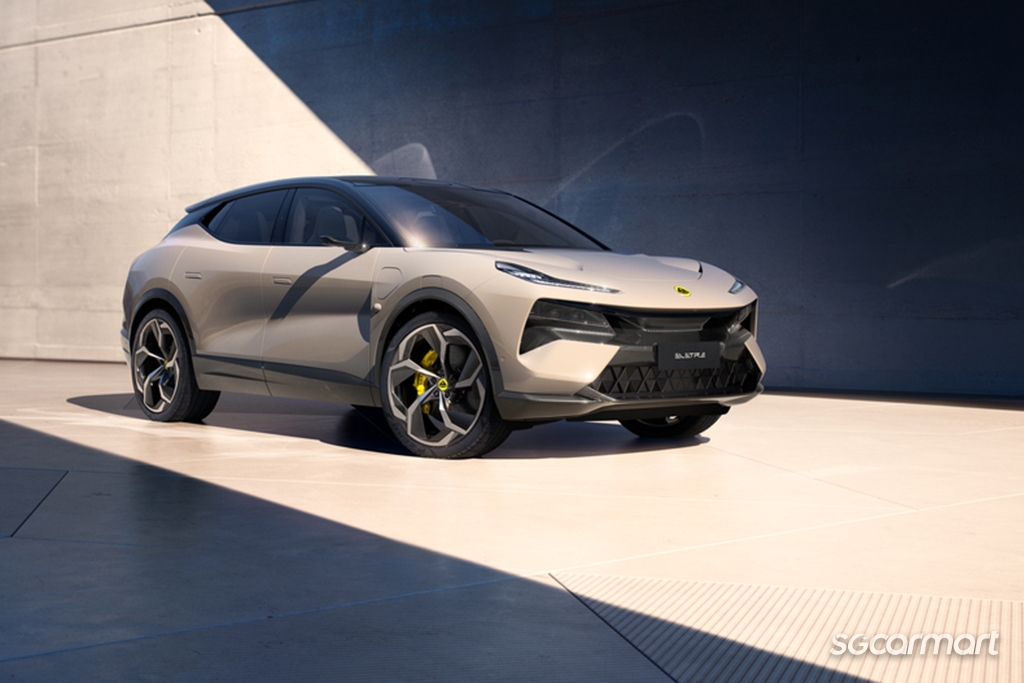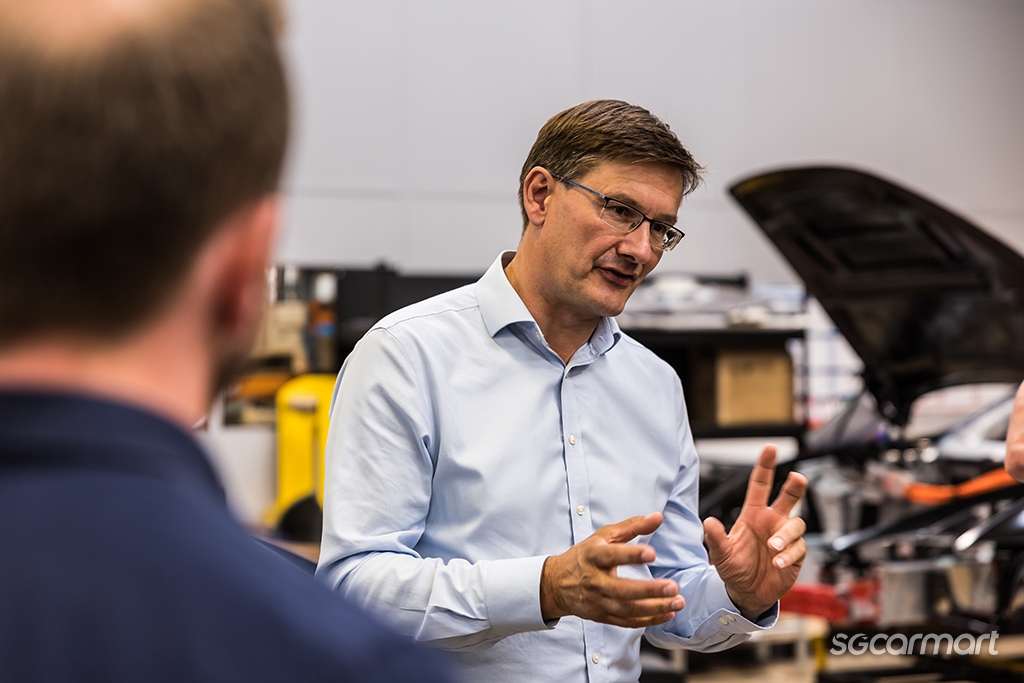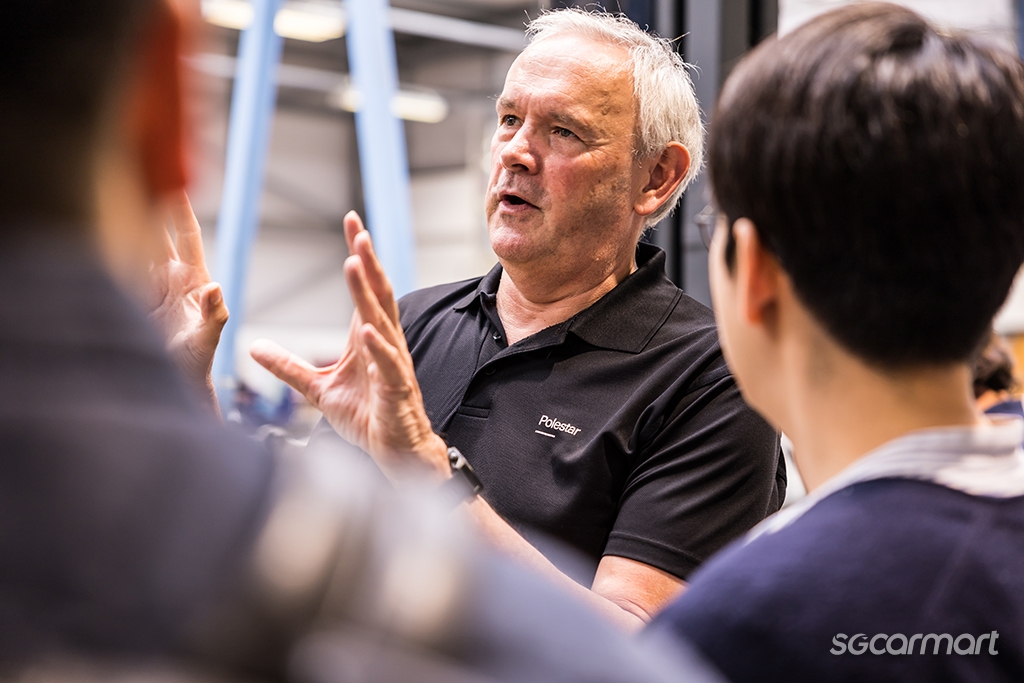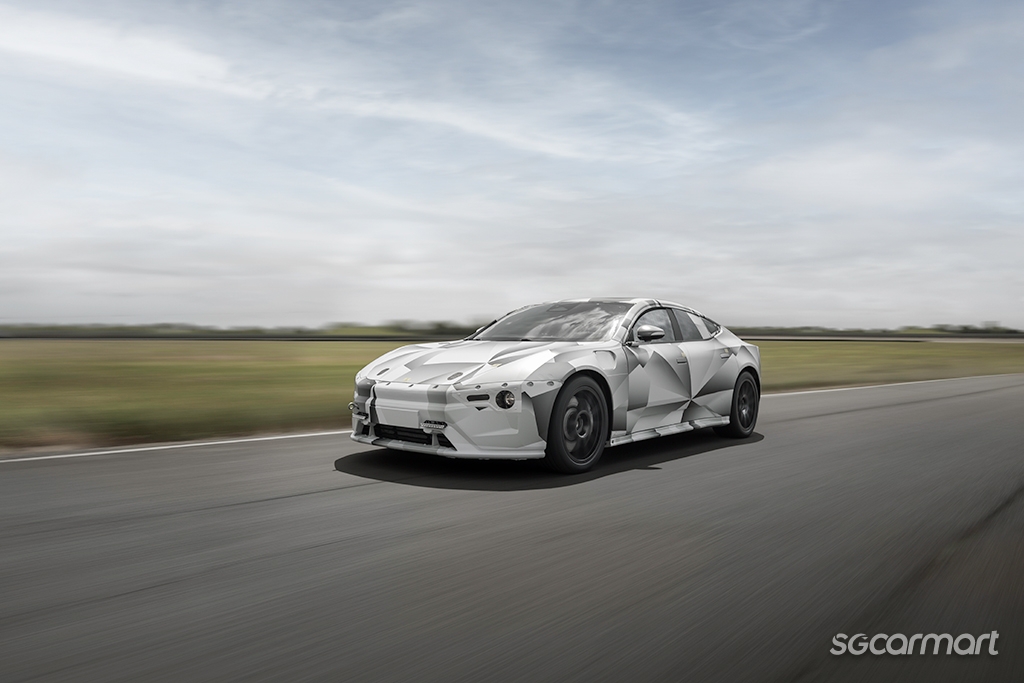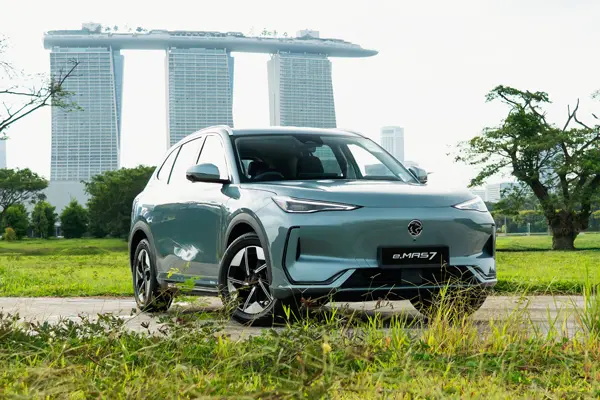R&D, the upcoming Polestar 5, and Polestar's future
25 Jul 2023|6,567 views
Polestar.
That's a name that's unfamiliar to most people. Not too surprising, considering the brand is relatively new, and right now sells all of one model here in Singapore.
The brand is quite set on changing this, however. Launching five cars in six years is certainly one way to do that.
A very brief history
Officially launched as a standalone brand in 2017 to focus on producing performance electric cars, Polestar is arguably one of the youngest automotive brands in the market. A 'start-up with a 100-year history', as some brand executives frame it (that history comes from the brand's ties with Volvo).
Since then, just two models have hit the road - the limited production plug-in hybrid Polestar 1 in 2019, and the all-electric Polestar 2 in 2020 (a model that has driven the brand to notable success across the globe). But many more models are to come - the Polestar 3 is entering production this year, while subsequent years will see the Polestar 4, 5 and 6 be launched in succession.
The upcoming Polestar 5 is being dubbed the brand's 'manifesto car', so there's clearly plenty riding on its success
This accelerated growth and rapid model rollout is emblematic of Polestar's philosophy and approach - to challenge big OEM methodologies, and to find a middle ground between small, niche car builders and large volume manufacturers.
One of the benefits of starting afresh and being new is that Polestar has the opportunity (and seeming financial backing) to experiment, to be "faster and more responsive to market changes, [and to] challenge big OEM methodologies", says Mr. Pete Allen, Head of Polestar U.K. R&D. With Polestar, there is "the risk appetite" that helps to unlock the "creativity and empowerment" within the relatively small group of experts.
In practice, we need not look too far for analogues - small volume, niche product manufacturers. For some context, each Polestar car in the U.K. is hand-delivered to every customer. The term often bandied about is 'boutique', but Mr. Allen also rightfully points out that with smaller niche automotive specialists, "sometimes they're not so great at delivering quality, delivering stuff on time, and maybe they are not so great at the commercial aspects."
"We have to ensure the quality, the delivery on time, the commercial control and the need to fundamentally be profitable, and those disciplines tend to come from larger companies who are more robust. What we are trying to do is really get the best of both worlds," he adds. It certainly helps to have the support of the larger Volvo Cars and Geely umbrella - Polestar can tap into their support in terms of logistics, supply chain, as well as aftersales support (vehicle servicing in the U.K. is conducted at respective Volvo service centres).
One important benefit of being situated in Motorsport Valley is the access to a wealth of engineering talent, as well as ample vehicle testing facilities
Pushing forward
To further the brand's global ambitions, a U.K. research and development facility has been set up at MIRA Technology Park. Located in the heart of Britain's Motorsport Valley, MIRA is home to proving grounds and engineering facilities, a host of automotive and motorsport brands, and now, Polestar's U.K. R&D headquarters.
With close proximity to facilities, resources and talent, this allows the brand to "maximise efficiency in the product development cycle", says Mr. Allen.
The U.K. team is presently focused on the development of the upcoming Polestar 5, a four-door executive sedan that will serve as the brand's 'manifesto car'. Based on the Precept Concept first unveiled in 2020, the Polestar 5 is being fully developed in the U.K., where the company is further developing its 'independent engineering capability'. "We can move fast, and stay abreast of the changes in the marketplace,” says Mr. Steve Swift, Director of Vehicle Engineering, Polestar, on what that capability entails.
Bespoke solutions are demanded - the new Sustainable Experience Architecture 1 (SEA1) platform features steering and suspension components unique to the car, which allows it to fulfil both its dynamic and design brief.
The body that sits atop the SEA1 platform also utilises technology new to the brand (although not new to the industry). The bonded aluminium unibody construction, which allows high-rigidity and (relative) low-weight, is technology typically used in low-volume performance cars. The U.K. R&D facility is helping the brand to scale this technology - the Polestar 5 has no illusions to become a high-volume seller, but growing economies of scale is what will allow the brand to improve and increase manufacturing.
Specific benefits for the Polestar 5? Torsional rigidity of a two-seat sportscar, but significantly lighter than any comparable car in its segment, says Mr. Swift. This will translate to better overall NVH dampening, but also better dynamic handling.
Why is the Polestar 5 so important? Besides just being the model that is developed fully in-house and from the ground up, the Polestar 5 also seeks to deliver on the brand ethos. Whereas models like the Polestar 3 and Polestar 4 fulfil present market demand for SUVs (and of course also shore up the bottom line), an executive sedan like the Polestar 5 (and the Polestar 6 roadster that will follow) is much more suited to delivering that combination of sportiness and luxury that the brand seeks to define itself by.
It's unlikely to be a high-volume model (leave that to the SUVs), but Polestar is hoping that the upcoming 5 will better clarify the brand image in buyers' minds.
Pivot
That clarity is, after all, what every brand (old or new) is chasing. Unencumbered by history, decades-long baked-in processes, and perhaps also expectations, Polestar has the freedom to define itself - in the true spirit of a start-up.
But, Polestar isn't the only one chasing electric excellence. At this year's Goodwood Festival of Speed, electric vehicles (in all shapes and sizes) were everywhere, an unmistakable indication of the path forward for the automotive industry. And one of the biggest booths belonged to Lotus, a 'sister' brand of Polestar (both now fall under the collective Geely umbrella, though they are separate entities).
Unlike Polestar, Lotus actually has a 75-year history to grapple with, a history that's very much in that 'smaller niche automotive specialist' mould. The difference, of course, is that Lotus has to make that big pivot - from making low-volume niche sports cars into electrification, and into profitability.
And, with the Eletre, Lotus is looking to dive headfirst into what is perhaps the most competitive segment - premium electric SUVs. As Mr. Mike Johnstone, Vice-President, Commercial, Lotus, tells us, "It gives us one of the largest addressable markets we've ever had. And those growing segments, whilst competitive, for us, the heritage and the history of the brand gives us that point of differentiation."
Like Polestar, the notion of 'pace' is at the forefront. While leveraging the emotional storytelling that 75 years of history can provide, Lotus are rapidly moving on from internal combustion into full electrification. "We are very much moving away from where we were before, which is more to do with enthusiasts/niche sports car model, and try and make sure that we're elevating not only the experience with the products but also the experience of the consumer, so as to elevate and build the brand globally," adds Mr. Johnstone.
The pivot to electrification is one that most established automotive brands are having to make (and we're seeing it happen in real time). Understandably, it is the newest brands, Polestar, Tesla, and the various niche electric hypercar brands, that have the advantage of starting with a relatively clean slate.
Polestar executives are clear that the brand is focused on delivering high-quality vehicles that combine dynamic capability with everyday luxury, while still having a very distinct design language
Full speed ahead
In speaking to various Polestar executives, the term that comes up repeatedly is 'speed'. Speed of development, speed of model rollout, and speed of growth.
Indeed, with a brand this new, having a particular pace of development and market responsiveness is what can set Polestar apart from your traditional, high-volume manufacturers.
The EV market is a vastly competitive one, and is only going to get even more crowded as more and more brands go electric. Of course, Polestar has plenty of incentive to come out strong, and to come out fast - to rapidly establish the brand amidst a torrent of change within the industry.
With clear vision, rapid development and an appetite for untraditional innovation, Polestar has its sights set on rapidly expanding its presence - both on the roads, but also in people's minds
What does this mean for the typical consumer? It's hard to say quite yet. Polestar has been clear about its growth targets - with a target of 290,000 annual sales by the end of 2025, the number is significant, but also not exponentially large (Tesla, the other major all-electric competitor in the market, sold over 400,000 units in Q1 2023).
Volume matters, of course. Volume breeds profitability. However, Polestar seeks a slightly different path - one defined not simply by sheer volume, but rather to produce distinct electrified products distinguished by clear design, dynamic capability, manufacturing quality, and customer satisfaction. Traditional goals, perhaps, but achieved through untraditional methods.
With just one model in the market right now, Polestar remains an obvious underdog, a position the company seems happy to still occupy. But with new models set to be launched every year for the near future, there's going to be ample opportunity to hear from the brand, and see if it can deliver with the speed and quality that Polestar is readily embracing.
Join us as we visit Polestar on video as well!
Polestar.
That's a name that's unfamiliar to most people. Not too surprising, considering the brand is relatively new, and right now sells all of one model here in Singapore.
The brand is quite set on changing this, however. Launching five cars in six years is certainly one way to do that.
A very brief history
Officially launched as a standalone brand in 2017 to focus on producing performance electric cars, Polestar is arguably one of the youngest automotive brands in the market. A 'start-up with a 100-year history', as some brand executives frame it (that history comes from the brand's ties with Volvo).
Since then, just two models have hit the road - the limited production plug-in hybrid Polestar 1 in 2019, and the all-electric Polestar 2 in 2020 (a model that has driven the brand to notable success across the globe). But many more models are to come - the Polestar 3 is entering production this year, while subsequent years will see the Polestar 4, 5 and 6 be launched in succession.
The upcoming Polestar 5 is being dubbed the brand's 'manifesto car', so there's clearly plenty riding on its success
This accelerated growth and rapid model rollout is emblematic of Polestar's philosophy and approach - to challenge big OEM methodologies, and to find a middle ground between small, niche car builders and large volume manufacturers.
One of the benefits of starting afresh and being new is that Polestar has the opportunity (and seeming financial backing) to experiment, to be "faster and more responsive to market changes, [and to] challenge big OEM methodologies", says Mr. Pete Allen, Head of Polestar U.K. R&D. With Polestar, there is "the risk appetite" that helps to unlock the "creativity and empowerment" within the relatively small group of experts.
In practice, we need not look too far for analogues - small volume, niche product manufacturers. For some context, each Polestar car in the U.K. is hand-delivered to every customer. The term often bandied about is 'boutique', but Mr. Allen also rightfully points out that with smaller niche automotive specialists, "sometimes they're not so great at delivering quality, delivering stuff on time, and maybe they are not so great at the commercial aspects."
"We have to ensure the quality, the delivery on time, the commercial control and the need to fundamentally be profitable, and those disciplines tend to come from larger companies who are more robust. What we are trying to do is really get the best of both worlds," he adds. It certainly helps to have the support of the larger Volvo Cars and Geely umbrella - Polestar can tap into their support in terms of logistics, supply chain, as well as aftersales support (vehicle servicing in the U.K. is conducted at respective Volvo service centres).
One important benefit of being situated in Motorsport Valley is the access to a wealth of engineering talent, as well as ample vehicle testing facilities
Pushing forward
To further the brand's global ambitions, a U.K. research and development facility has been set up at MIRA Technology Park. Located in the heart of Britain's Motorsport Valley, MIRA is home to proving grounds and engineering facilities, a host of automotive and motorsport brands, and now, Polestar's U.K. R&D headquarters.
With close proximity to facilities, resources and talent, this allows the brand to "maximise efficiency in the product development cycle", says Mr. Allen.
The U.K. team is presently focused on the development of the upcoming Polestar 5, a four-door executive sedan that will serve as the brand's 'manifesto car'. Based on the Precept Concept first unveiled in 2020, the Polestar 5 is being fully developed in the U.K., where the company is further developing its 'independent engineering capability'. "We can move fast, and stay abreast of the changes in the marketplace,” says Mr. Steve Swift, Director of Vehicle Engineering, Polestar, on what that capability entails.
Bespoke solutions are demanded - the new Sustainable Experience Architecture 1 (SEA1) platform features steering and suspension components unique to the car, which allows it to fulfil both its dynamic and design brief.
The body that sits atop the SEA1 platform also utilises technology new to the brand (although not new to the industry). The bonded aluminium unibody construction, which allows high-rigidity and (relative) low-weight, is technology typically used in low-volume performance cars. The U.K. R&D facility is helping the brand to scale this technology - the Polestar 5 has no illusions to become a high-volume seller, but growing economies of scale is what will allow the brand to improve and increase manufacturing.
Specific benefits for the Polestar 5? Torsional rigidity of a two-seat sportscar, but significantly lighter than any comparable car in its segment, says Mr. Swift. This will translate to better overall NVH dampening, but also better dynamic handling.
Why is the Polestar 5 so important? Besides just being the model that is developed fully in-house and from the ground up, the Polestar 5 also seeks to deliver on the brand ethos. Whereas models like the Polestar 3 and Polestar 4 fulfil present market demand for SUVs (and of course also shore up the bottom line), an executive sedan like the Polestar 5 (and the Polestar 6 roadster that will follow) is much more suited to delivering that combination of sportiness and luxury that the brand seeks to define itself by.
It's unlikely to be a high-volume model (leave that to the SUVs), but Polestar is hoping that the upcoming 5 will better clarify the brand image in buyers' minds.
Pivot
That clarity is, after all, what every brand (old or new) is chasing. Unencumbered by history, decades-long baked-in processes, and perhaps also expectations, Polestar has the freedom to define itself - in the true spirit of a start-up.
But, Polestar isn't the only one chasing electric excellence. At this year's Goodwood Festival of Speed, electric vehicles (in all shapes and sizes) were everywhere, an unmistakable indication of the path forward for the automotive industry. And one of the biggest booths belonged to Lotus, a 'sister' brand of Polestar (both now fall under the collective Geely umbrella, though they are separate entities).
Unlike Polestar, Lotus actually has a 75-year history to grapple with, a history that's very much in that 'smaller niche automotive specialist' mould. The difference, of course, is that Lotus has to make that big pivot - from making low-volume niche sports cars into electrification, and into profitability.
And, with the Eletre, Lotus is looking to dive headfirst into what is perhaps the most competitive segment - premium electric SUVs. As Mr. Mike Johnstone, Vice-President, Commercial, Lotus, tells us, "It gives us one of the largest addressable markets we've ever had. And those growing segments, whilst competitive, for us, the heritage and the history of the brand gives us that point of differentiation."
Like Polestar, the notion of 'pace' is at the forefront. While leveraging the emotional storytelling that 75 years of history can provide, Lotus are rapidly moving on from internal combustion into full electrification. "We are very much moving away from where we were before, which is more to do with enthusiasts/niche sports car model, and try and make sure that we're elevating not only the experience with the products but also the experience of the consumer, so as to elevate and build the brand globally," adds Mr. Johnstone.
The pivot to electrification is one that most established automotive brands are having to make (and we're seeing it happen in real time). Understandably, it is the newest brands, Polestar, Tesla, and the various niche electric hypercar brands, that have the advantage of starting with a relatively clean slate.
Polestar executives are clear that the brand is focused on delivering high-quality vehicles that combine dynamic capability with everyday luxury, while still having a very distinct design language
Full speed ahead
In speaking to various Polestar executives, the term that comes up repeatedly is 'speed'. Speed of development, speed of model rollout, and speed of growth.
Indeed, with a brand this new, having a particular pace of development and market responsiveness is what can set Polestar apart from your traditional, high-volume manufacturers.
The EV market is a vastly competitive one, and is only going to get even more crowded as more and more brands go electric. Of course, Polestar has plenty of incentive to come out strong, and to come out fast - to rapidly establish the brand amidst a torrent of change within the industry.
With clear vision, rapid development and an appetite for untraditional innovation, Polestar has its sights set on rapidly expanding its presence - both on the roads, but also in people's minds
What does this mean for the typical consumer? It's hard to say quite yet. Polestar has been clear about its growth targets - with a target of 290,000 annual sales by the end of 2025, the number is significant, but also not exponentially large (Tesla, the other major all-electric competitor in the market, sold over 400,000 units in Q1 2023).
Volume matters, of course. Volume breeds profitability. However, Polestar seeks a slightly different path - one defined not simply by sheer volume, but rather to produce distinct electrified products distinguished by clear design, dynamic capability, manufacturing quality, and customer satisfaction. Traditional goals, perhaps, but achieved through untraditional methods.
With just one model in the market right now, Polestar remains an obvious underdog, a position the company seems happy to still occupy. But with new models set to be launched every year for the near future, there's going to be ample opportunity to hear from the brand, and see if it can deliver with the speed and quality that Polestar is readily embracing.
Join us as we visit Polestar on video as well!
Thank You For Your Subscription.






























